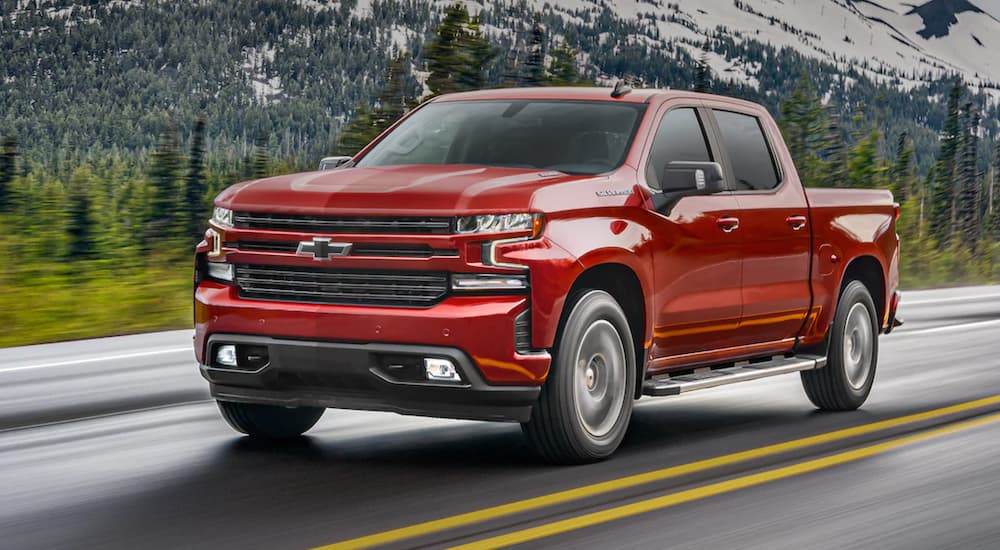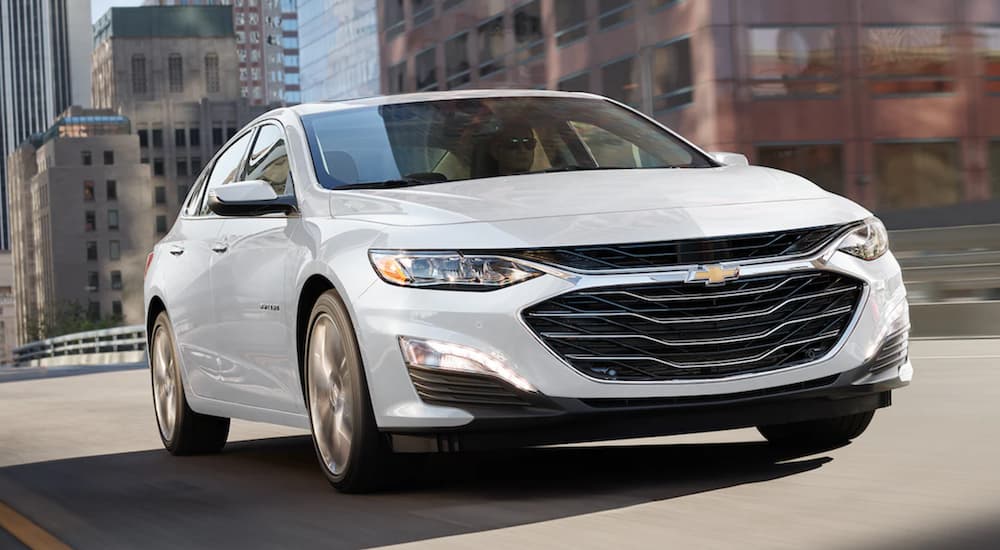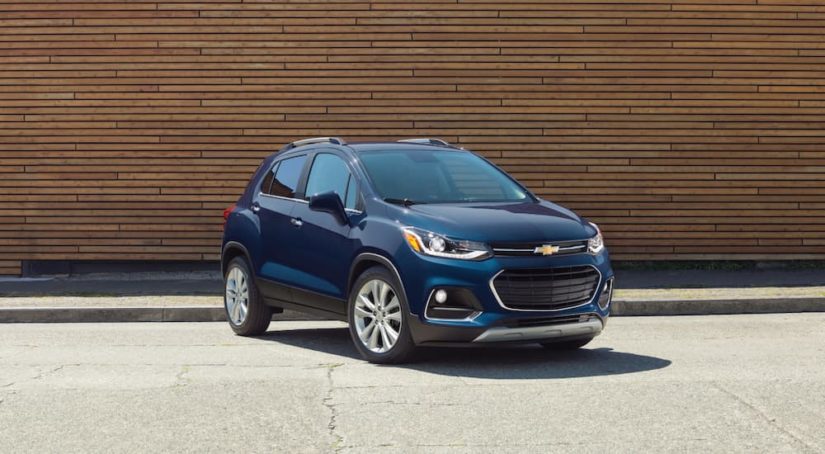It’s a good idea to buy a pre-owned vehicle if you’re looking to save money, avoid initial depreciation on your next car, and have a reliable dealership you can buy from. Those three qualifications might seem minor or obvious, but they’re also crucial in finding a great, reliable vehicle that will keep more money in your wallet. The difference between the kinds of vehicles that you’ll find at a certified used Chevy dealer and what you can get from some random stranger across town can be massive. When shopping for your next vehicle, it is much better to choose a dealership rather than a private seller.
It’s tempting to buy from a private individual since they’re almost always asking for less money than a dealership is. Saving money is huge, and it’s a major reason most of us choose a used car rather than a new one in the first place. Still, there’s no amount of money worth saving if you get a car you can’t rely on, and you end up spending a lot more on trying to keep it running than you would’ve with a good-quality used model from a dealership. It’s hard to have that kind of long-term mindset with spending and saving money, but it does make a huge difference.
The Pros of Buying a Used Car
Saving Money
The biggest advantage of buying a pre-owned vehicle is that you save money compared to buying a brand-new car. The difference will depend greatly on what the market looks like at any given time (the last year or so has been rough for buying a used car), but generally, a pre-owned vehicle will save you money. Often, this difference is so significant that a used model effectively becomes the only affordable option for many people; the monthly payment on a used car can easily be half what it would be for a similar new vehicle. Just remember that the older and less-popular the model is, the less you’ll likely have to pay for it; just don’t go too far back, or you’ll miss out on some very useful modern features.

Skipping Depreciation
Depreciation, or loss in value, on cars is notoriously high; few items lose as much value as a new vehicle will over the time someone owns it. A lot of the depreciation on a vehicle occurs within the first few years after it is sold, making this loss in value the highest when someone buys a brand-new vehicle. When you buy a used model instead, you get to skip most of this initial depreciation; in fact, it’s what makes the used car cheaper in the first place. You’ll probably still experience some depreciation on your vehicle over time, but you might lose less value in five years than the original owner did in the first two or three years. This means your investment in a vehicle is better served, and your money is well-spent.
A Variety of Options
Some people think that shopping for a used car means being restricted to just a few vehicles, while new-car buyers are flooded with dozens of amazing options and features. In reality, however, when you start looking at pre-owned vehicles, you’ll find a virtually unlimited selection of makes, models, years, trims, and features. Not only do you have a wide range of vehicles to choose from, but you’ll also be able to buy models that have been discontinued but might perfectly meet your needs. This flexibility is fantastic and can make a huge difference if you have a tight budget but still want plenty of options.
Keeping a Car on the Road
This may seem a bit strange initially, but choosing a used car also keeps a vehicle on the road longer, which is helpful for the environment. There’s a lot of focus on emissions from vehicles, which are important, but the construction of cars also requires massive amounts of energy and resources. The longer a vehicle stays on the road, the more justifiable that expenditure of resources becomes and helps offset what it took to create that vehicle. When you choose a used model and keep it on the road longer, that’s one fewer new vehicle that needs to be made and a reduced overall impact on the environment.
The Cons of Buying a Used Car
The Unknown
There are great reasons to choose a used car for your next vehicle, but also a couple of potential downsides to consider. Perhaps the biggest concern many used-car buyers have is the sense of uncertainty regarding what the vehicle has been through in the past. You can have a car inspected, look it over yourself, and even have a vehicle history report on it, but none of that gives you absolute certainty about what the previous owner did with the vehicle. Buying from a reputable dealership will help offset this unknown element, which is a major reason to choose a dealer that has to follow guidelines and regulations that a private seller doesn’t.
Lack of New-Car Features
The features and technology you’ll find in a new car today compared to even ten years ago can be astounding; go back further, and it becomes even more pronounced. Choosing a used model means you’ll likely miss out on some of the latest features, especially cutting-edge technology like semi-autonomous driving systems. You can make up for some of this by choosing the most recent model year you can afford and looking at what was provided on certain trims compared to others. Key model years can also make a difference as you look at the start of a new generation or a major update that includes technology you won’t find on the same used car from just a year before.

The Middle Ground: Buying a Certified Pre-owned Vehicle
One of the best ways to avoid a used car’s downsides while enjoying its advantages is with a Certified Pre-Owned (CPO) vehicle. While the terms “used” and “pre-owned” are synonymous with each other, a CPO car is different: it’s a used vehicle that has to meet strict terms set by the original manufacturer. These are vehicles in fantastic condition, from recent years, and with limited miles on them. They also have to pass a strict inspection, so you know they’re in great shape no matter what the previous driver did.
Each manufacturer sets its own Certified Pre-Owned guidelines. A great example of these parameters which demonstrate the level of quality CPOs must adhere to are Chevy CPOs, whose guidelines are as follows:
- Must be within 6 model years
- Must have fewer than 75,000 miles
- Pass a 172-point inspection
- Features 6-year/100,000-mile powertrain warranty
- Features 12-month/12,000-mile bumper-to-bumper warranty
There are other advantages and perks with a Chevy CPO model, like complimentary scheduled service, a 3-day/150-mile vehicle exchange program after purchase, 24/7 roadside assistance, and courtesy transportation for the duration of the powertrain warranty. All of this comes together to provide you with peace of mind that you won’t find on other used models, creating an opportunity that falls right in the middle between a new and pre-owned vehicle. The only thing to consider is that you’ll usually pay a bit more for a CPO vehicle compared to a comparable used model that doesn’t come with all of the CPO benefits, but it will still be less than what a new car costs. You’ll have to decide which option is right for you, but keeping these things in mind can help you find the perfect choice with everything you need.
The Best, Most Cost-Effective Option
The stigma of buying a used vehicle is one that is largely untrue when buying from a trustworthy dealership. The days of shady used car lots are a thing of the past, as every consumer should be able to find a reliable dealer if they are willing to put in the research. Shopping the used market can open up a wealth of vehicle options, giving the buyer the opportunity to purchase a vehicle with up-to-date features at a lower cost that avoids the sting of new-car depreciation. With the inclusion of CPO options, the used market offers a vast array of vehicle options that are not limited to current year models. If you are looking for reliability and modern tech, all at an affordable price, shopping used at a dealership you trust is by far the way to go.



